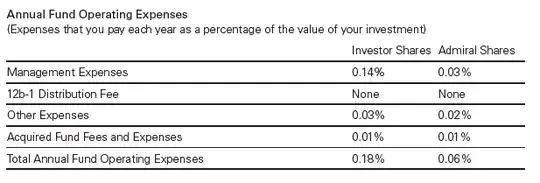Suppose a mutual fund invests only in other mutual funds, instead of investing in stocks or bonds directly. Does the reported expense ratio of that fund include the expense ratios of the funds it holds, or is it an expense over and above those of the funds it holds?
For example, consider the Vanguard Target Retirement 2045 Fund (VTIVX), which invests solely in three other funds:
- Vanguard Total Stock Market Index Fund Investor Shares (VTSMX) - 63.4%
- Vanguard Total International Stock Index Fund Investor Shares (VGTSX) - 26.4%
- Vanguard Total Bond Market II Index Fund Investor Shares (VTBIX) - 10.2%
VTIVX has an expense ratio of .19%. But the three funds it invests in also have their own expense ratios: .18%, .22%, and .12%, respectively. If I invested in those three funds directly, in the same proportion as VTIVX does, my investment would have an effective expense ratio of .18% x 63.4% + .22% x 26.4% + .12% x 10.2% = .18%.
So, does that mean an investment in VTIVX effectively loses .19% + .18% = .37% per year in expenses overall, or does VTIVX's expense ratio of .19% include the .18% expense ratio of its holdings, plus .01% to cover its own costs?

